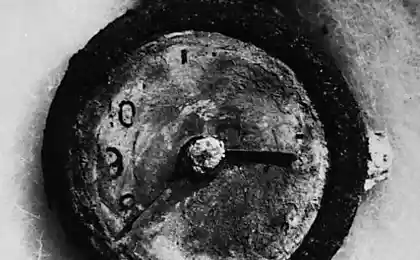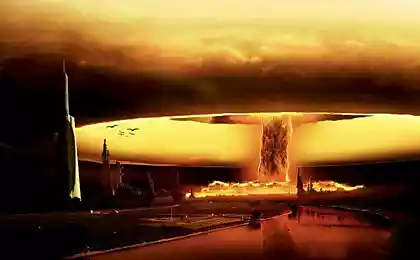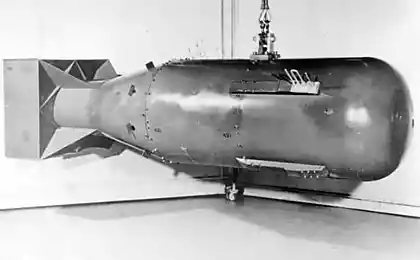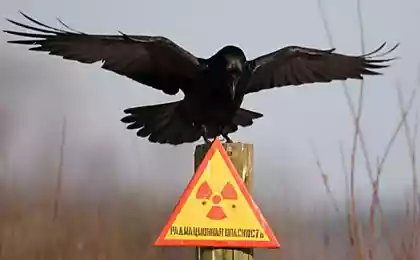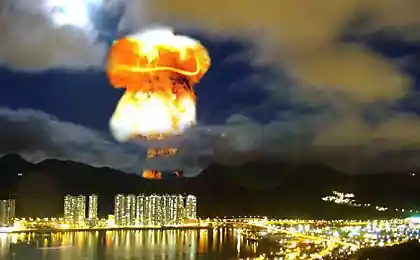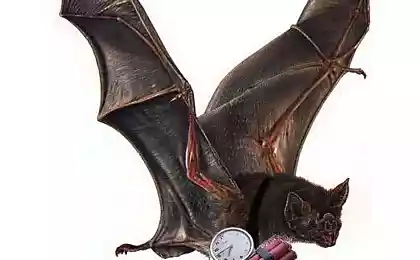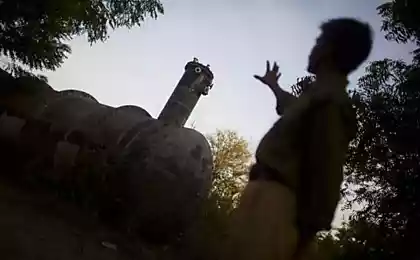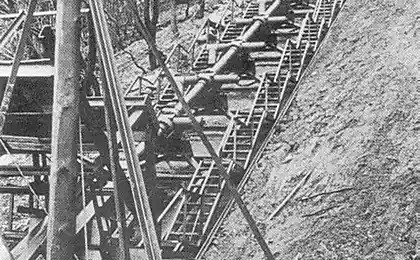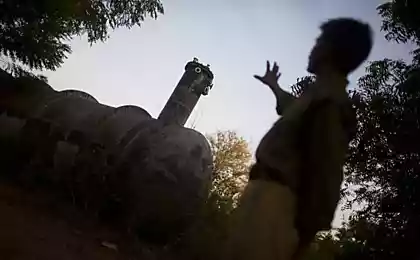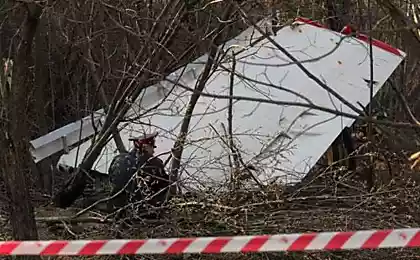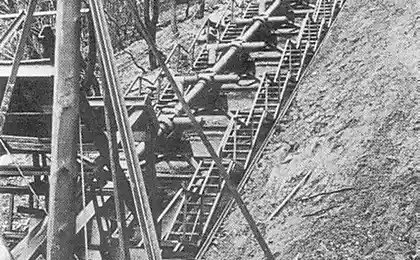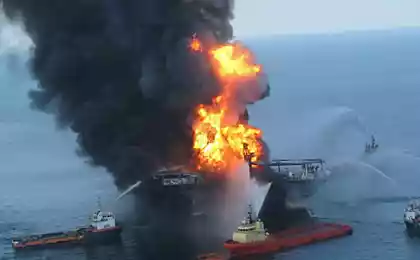2688
Palomares incident
Episode Palomares (Palomares) - one of those incidents which resulted in the face of our planet could have changed beyond recognition. And to be precise, the south-eastern part of the Mediterranean coast of Spain could turn into a radioactive desert.
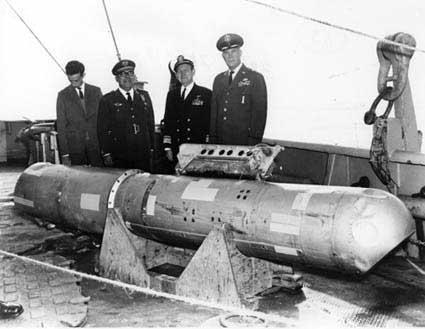
During the Cold War Strategic Air Command US Air Force to conduct operations "Chrome Dome» (Chrome Dome), in which the air was constantly a certain number of strategic bombers carrying nuclear weapons and ready at any moment to change course and to strike pre-defined targets in the Soviet Union. Such patrols allowed in the event of war not to spend the time to prepare the aircraft for take-off and significantly reduced its way to the goal.
January 17, 1966 bomber B-52G «Stratofortress" (Ser. No. 58-0256, 68th Bomber Wing, commander Captain Charles Wendorf) departed from the airbase Seymour-Johnson (USA) on a regular patrols. On board the aircraft were four thermonuclear bombs B28RI (1, 45 Mt). The plane had to make two refueling over the territory of Spain.
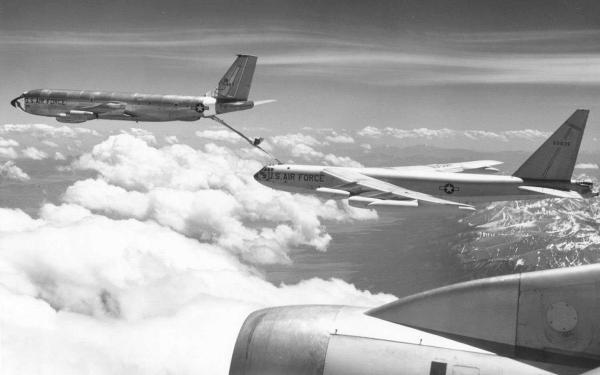

During refueling, the second around 10:30 am local time at a height of 9500 m bomber collided with a tanker aircraft KC-135A «Stratotanker" (Ser. No. 61-0273, 97th Bomber Wing, commander, Major Emil Chapla) in the region fishing village of Palomares, the municipality of Cuevas del Almanzora.
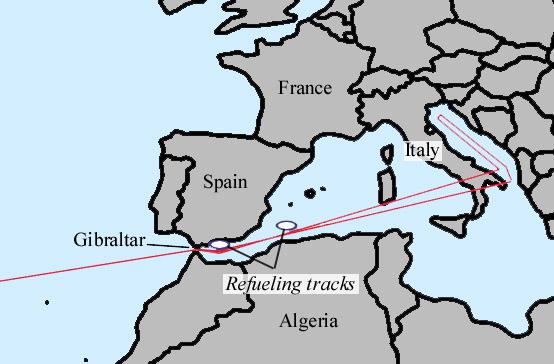
In the crash, killing all four crew members of the tanker and three crew members bomber, four others managed to eject.
Fire broke out strategic bomber crew forced to apply emergency discharge of hydrogen bombs. Four of the seven members of the bomber crew had to leave. After that, there was an explosion. Because of the design features of emergency relief bombs, they had to come down to earth by parachute. But in this case, the parachute opened, only one bomb.
The first bomb, whose parachute failed to open, crashed into the Mediterranean Sea. Searched for it three months later. Another bomb, whose parachute opened, went down to the bed of the river Almanzora, near the coast. But the greatest danger represented by two bombs, which at speeds exceeding 300 kilometers per hour and crashed to the ground. One of them close to home resident village of Palomares.
A day lost three bombs spotted on the coast; initiating charge of two of them worked from hitting the ground. Fortunately, the opposite amounts of TNT exploded out of sync, and instead of compression detonation of radioactive masses scattered around her. The search for the fourth took place on the territory of 70 square meters. km. One and a half months of hard work out of the water were removed tons of debris, but the bomb was not among them.
Thanks to fishermen who witnessed the tragedy of March 15, it was found the crash site of the ill-fated cargo. The bomb was found at a depth of 777 m, above the steep bottom cleft.
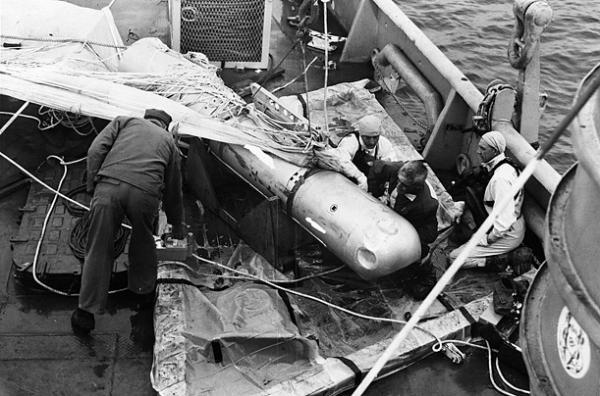
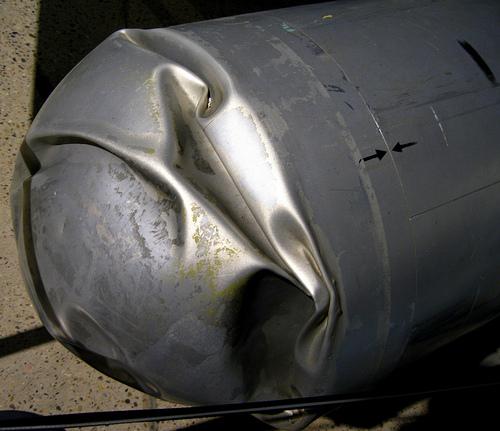
By inhuman forces, after a few slips and breaks ropes, on April 7 bomb managed to raise. She lay on the bottom of 79 days 22 hours 23 minutes. After a further 1 hour 29 minutes to defuse specialists. It was the most expensive rescue operations at sea in the twentieth century - it costs amounted to $ 84 million dollars.


Satisfied generals close to the hydrogen bomb, which got 3 months from the seabed.
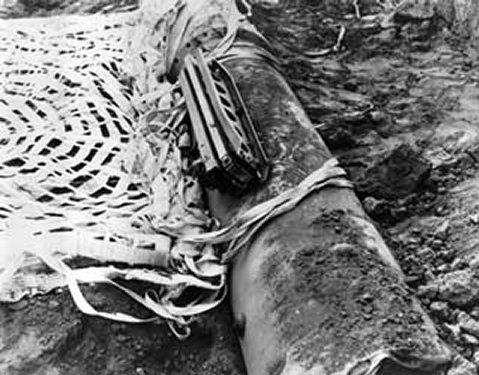
This bomb fell in Palomares, who miraculously did not explode. But could it be otherwise ...
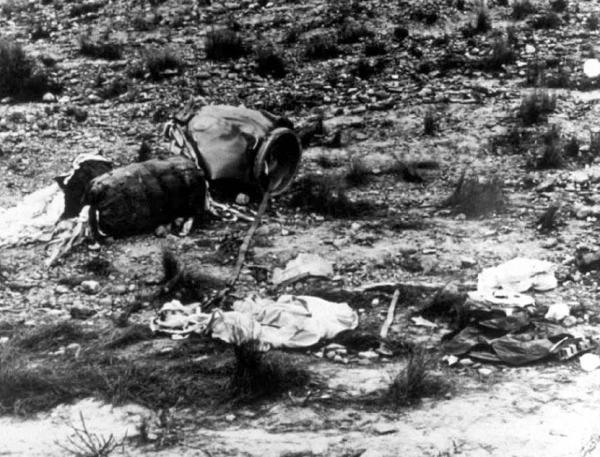
TNT explosion occurred inside one of the bombs, which did not lead to detonation and explosion plutonium toppings.
The result of the explosion was the release into the atmosphere of clouds of radioactive dust.

The first Spanish military aircraft at the crash site.
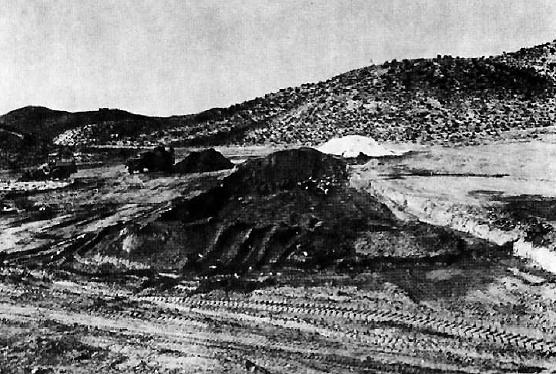
Place the fall of the B-52. Crater 30 x 10 x 3 m
After the crash of the US Palomares said that stop flights bombers with nuclear warheads over Spain. A few days later the Spanish government has established a formal ban on such flights.
US spent cleaning the infected area and met the 536 applications for compensation, paying 711 thousand. Dollars.
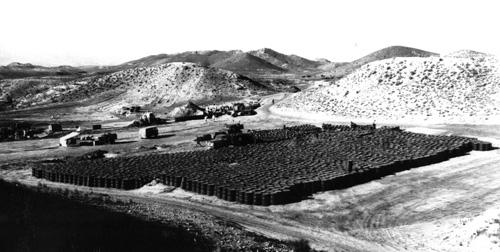
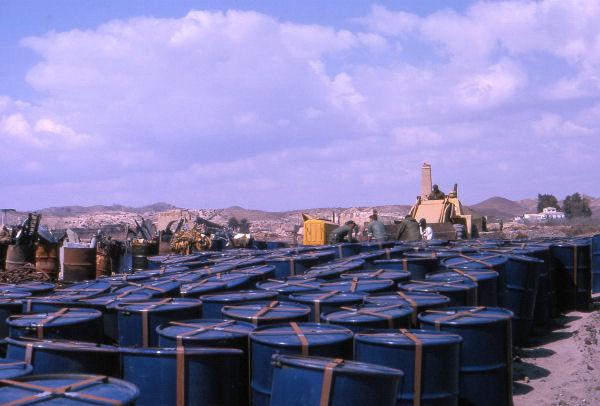
Barrels of collected soil ready for shipment to the United States for processing.

Participants radioactive treatment from the US Army.
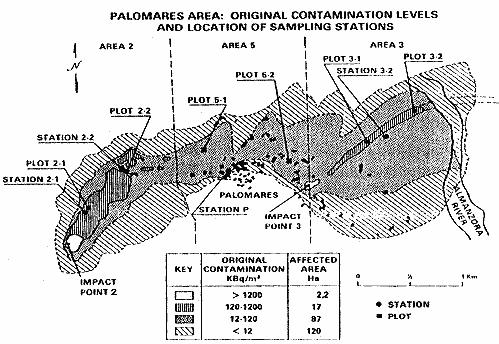
Map of radioactive contamination of the soil in the area of Palomares and location of the recording equipment.
Another 14, 5 thousand. Dollars had been paid to the fisherman, have been falling bombs into the sea.
In the same year the Spanish official Manuel Fraga Ilibarn (center) and US Ambassador Angier Biddle Duke (left), swam in the sea in order to demonstrate its safety.
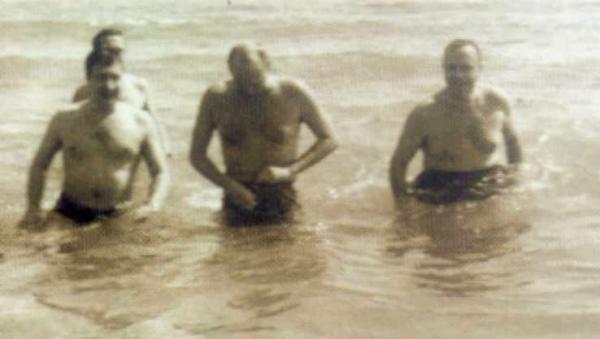
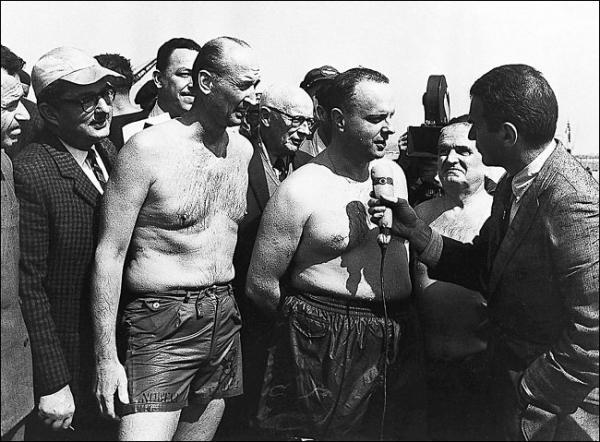
To some extent, the incident in Palomares, served as the idea to create an anti-war comedy "The Day the fish surfaced» (The Day the Fish Came Out).

In the Palomares decades later about what happened does not resemble anything but street "January 17, 1966».
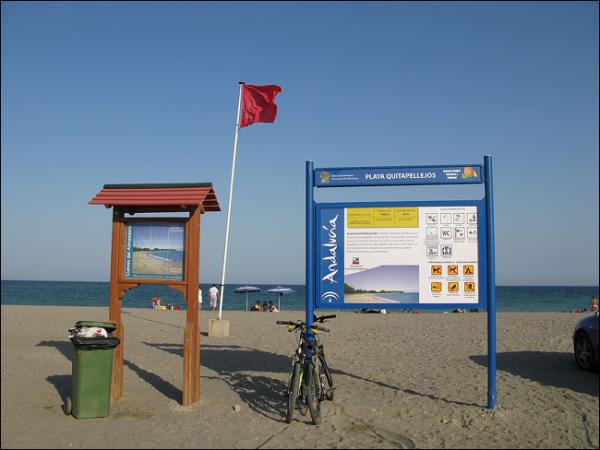

During the Cold War Strategic Air Command US Air Force to conduct operations "Chrome Dome» (Chrome Dome), in which the air was constantly a certain number of strategic bombers carrying nuclear weapons and ready at any moment to change course and to strike pre-defined targets in the Soviet Union. Such patrols allowed in the event of war not to spend the time to prepare the aircraft for take-off and significantly reduced its way to the goal.
January 17, 1966 bomber B-52G «Stratofortress" (Ser. No. 58-0256, 68th Bomber Wing, commander Captain Charles Wendorf) departed from the airbase Seymour-Johnson (USA) on a regular patrols. On board the aircraft were four thermonuclear bombs B28RI (1, 45 Mt). The plane had to make two refueling over the territory of Spain.


During refueling, the second around 10:30 am local time at a height of 9500 m bomber collided with a tanker aircraft KC-135A «Stratotanker" (Ser. No. 61-0273, 97th Bomber Wing, commander, Major Emil Chapla) in the region fishing village of Palomares, the municipality of Cuevas del Almanzora.

In the crash, killing all four crew members of the tanker and three crew members bomber, four others managed to eject.
Fire broke out strategic bomber crew forced to apply emergency discharge of hydrogen bombs. Four of the seven members of the bomber crew had to leave. After that, there was an explosion. Because of the design features of emergency relief bombs, they had to come down to earth by parachute. But in this case, the parachute opened, only one bomb.
The first bomb, whose parachute failed to open, crashed into the Mediterranean Sea. Searched for it three months later. Another bomb, whose parachute opened, went down to the bed of the river Almanzora, near the coast. But the greatest danger represented by two bombs, which at speeds exceeding 300 kilometers per hour and crashed to the ground. One of them close to home resident village of Palomares.
A day lost three bombs spotted on the coast; initiating charge of two of them worked from hitting the ground. Fortunately, the opposite amounts of TNT exploded out of sync, and instead of compression detonation of radioactive masses scattered around her. The search for the fourth took place on the territory of 70 square meters. km. One and a half months of hard work out of the water were removed tons of debris, but the bomb was not among them.
Thanks to fishermen who witnessed the tragedy of March 15, it was found the crash site of the ill-fated cargo. The bomb was found at a depth of 777 m, above the steep bottom cleft.


By inhuman forces, after a few slips and breaks ropes, on April 7 bomb managed to raise. She lay on the bottom of 79 days 22 hours 23 minutes. After a further 1 hour 29 minutes to defuse specialists. It was the most expensive rescue operations at sea in the twentieth century - it costs amounted to $ 84 million dollars.


Satisfied generals close to the hydrogen bomb, which got 3 months from the seabed.

This bomb fell in Palomares, who miraculously did not explode. But could it be otherwise ...

TNT explosion occurred inside one of the bombs, which did not lead to detonation and explosion plutonium toppings.
The result of the explosion was the release into the atmosphere of clouds of radioactive dust.

The first Spanish military aircraft at the crash site.

Place the fall of the B-52. Crater 30 x 10 x 3 m
After the crash of the US Palomares said that stop flights bombers with nuclear warheads over Spain. A few days later the Spanish government has established a formal ban on such flights.
US spent cleaning the infected area and met the 536 applications for compensation, paying 711 thousand. Dollars.


Barrels of collected soil ready for shipment to the United States for processing.

Participants radioactive treatment from the US Army.

Map of radioactive contamination of the soil in the area of Palomares and location of the recording equipment.
Another 14, 5 thousand. Dollars had been paid to the fisherman, have been falling bombs into the sea.
In the same year the Spanish official Manuel Fraga Ilibarn (center) and US Ambassador Angier Biddle Duke (left), swam in the sea in order to demonstrate its safety.


To some extent, the incident in Palomares, served as the idea to create an anti-war comedy "The Day the fish surfaced» (The Day the Fish Came Out).

In the Palomares decades later about what happened does not resemble anything but street "January 17, 1966».


